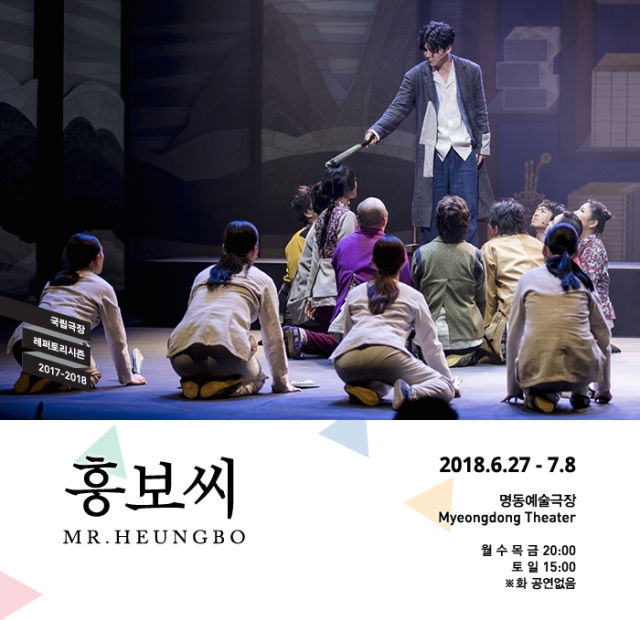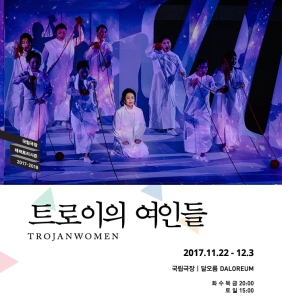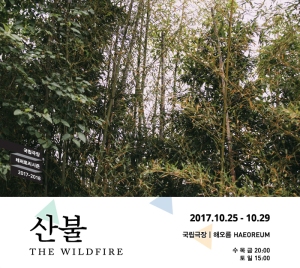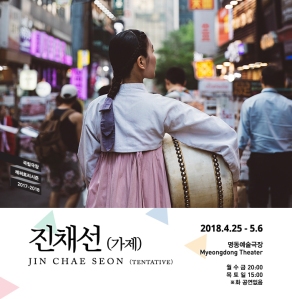The National Theater of Korea just presented its upcoming “National Repertory Season 2017–18” (국립극장 레퍼토리시즌). Every year, during the summer break, fans of gugak, pansori, and changgeuk are looking forward which new pieces will be shown, which earlier productions will be shown again (thus made it into the repertory), and who is featured in the “Wanchang Pansori”-series – and if it is not discontinued. (It is not – and the two first performances are Chunhyang-ga by Yu Su-jeong and Simcheong-ga by Heo Ae-seon!)
It is the fifth season, from the beginning under the artistic direction of Kim Seong-nyeo (김성녀, 국립창극단 예술감독), which already featured several bold experiments but rather few long-term sellers. (See an earlier post for my preview of the first National Repertory Season 2012–13)
This year, surprises are few. Nevertheless, the season sounds promising. Here is the brief run-down of the upcoming performances by the National Changgeuk Company (국립창극단), followed by some comments (click on the posters for the official production
announcements).
First, a new piece by Lee Jaram (이자람) in February 2018 (maybe this time with her on stage?), which is of course always welcome. Whether her yet unnamed production will kick of a “New Changgeuk”-series (新창극) remains to be seen. Also, last year’s Mr Heungbo (흥보씨), that seems to have attracted many audiences, is shown again in June 2018 – great for me, as I couldn’t see it in spring 2016 and now have another chance. Interestingly, the venue has changed from the main stage of the National Theater on Namsan to the recently renovated and more centrally located Myeongdong Theater.
The revival of Ong Keng Sen’s adaptation of Euripides Women of Troy (트로이의 여인) in November 2017, a production I first saw last year, is likewise a safe bet. The piece combined pansori singing by some of the greatest members of the ensemble and a story about female loss and post-war mourning quite persuasively.Women of Troy also travels to London in June 2018 and there is a special event with tickets and round trips to the UK as prizes.
The most astonishing news is the changgeuk-adaptation of The Wildfire (산불), premiering rather soon in October. Who will adapt and stage this classic Korean post-war drama by Cha Beom-seok (차범석, translated as “Burning Mountain” by Janet Poole) is not yet clear. I wonder if this is in fact a revival of the 2007 production, adapted and directed by Park Seong-hwan (박성환), or a completely new production (the latter seems to be the case).
In 2007, still under the artistic direction of Yu Yeong-dae (유영대), Wildfire was among the first pieces in a series of “Young Changgeuk” (젊은 창극) that – unfortunately – remained rather short. The production was revived the following year, but since then there has been no changgeuk-version of a original Korean play, although some theatre director Han Tae-suk (한태숙) staged a changgeuk based on the folk tale of Janghwa [and] Hongryeon (장화홍련, 2012) and several Western classics (including Medea, Orfeo, and Women of Troy) were staged as changgeuk.
After three years of new madang nori-plays (based on classical pansori) every end-of-year, the first one (Simcheong is Coming, 심청이 온다, from 2013) is shown again this winter. It seems that these large-scale in-the-round comedies, featuring well-known singers and all directed (so far) by madang nori godfather Son Jin-chaek (손진책), turned out audience magnets, as they are usually shown for quite a while, this time more than two months, from early December until mid-February.
Son Jin-chaek is also listed as the director of a new changgeuk-piece (tentatively) called Jin Chae-seon (진채선), to premiere in April 2018. It is about the eponimous first female pansori singer who lived in the second half of the 19th century. The poster suggests, however, that the plot is set in contemporary times. There have been several productions by ensemble Taroo that deal with this subject matter (Jin Chae-seon in 2011, Unhyeon Palace Romance in 2013, Jin Chae-seon’s Story in 2014), as well as a feature film two years ago, so that my excitement is not as high as it could be. Nevertheless, this piece fits well with another adaptation of a pansori-related plot, Seopyeonje (서편제, 2013), based the novels by Lee Cheong-jun (이청준) and the eponymous movie (available online, thanks to the Korean Film Archive).
Already in November, the (traditional) National Orchestra of Korea (국립국악관현악단) presents a cross-over event, presumably parts from all five (canonical) pieces of pansori – thus the title – performed by the orchestra. Innovative experiment or uninteresting fusion? Remains to be seen, or rather: heard.
A variety of pieces, some appealing to popular taste, other to theatregoers and fans of experimental music theatre – I’m looking forward to some new approaches to changgeuk!
— 17 July 2017 (月)
Productions by the National Changgeuk Company of Korea and other Pansori Related Events at the National Theater (National Repertory Season 2017–18)
2017
- 완창판소리 – 유수정의 춘향가, 9.23(토)
- 완창판소리 – 허애선의 심청가, 10.21(토)
- 산불, 10.25(수)~10.29(일)
- 국립국악관현악단 <다섯 판소리>, 11.17(금), 국립국악관현악단
- 트로이의 여인들, 11.22(화)~12.3(일)
- 마당놀이 <심청이 온다>, 12.8(금)~12.31(일)
- 제야판소리,12.31(일) 국립창극단
2018
- 마당놀이 <심청이 온다>, 1.1(월)~2.18(일)
- 新창극 시리즈 1 – 이자람(가제), 2.28(수)~3.4(일)
- 완창판소리, 3.24(토)
- 완창판소리, 4.21(토)
- 진채선(가제), 4.25(수)~5.6(일)
- 완창판소리, 5.26(토)
- 완창판소리, 6.23(토)
- 흥보씨, 6.27(수)~7.8(일)








Pingback: Daehangno Poster Session 7 | Seoul Stages
Pingback: Beyond Tradition, Beyond Korea: New Changgeuk Repertories at the National Theater | Seoul Stages